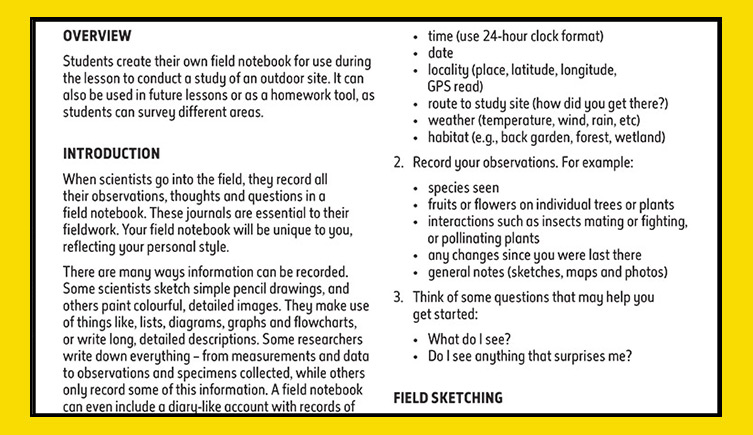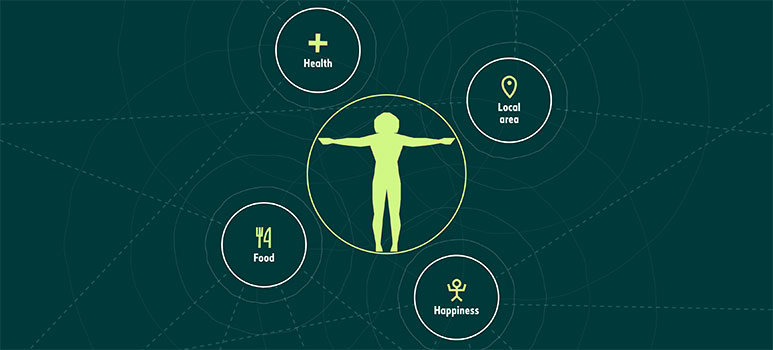About this resource
- Resource type: practical activity
- Theme: Tools for outdoor enquiry
In this activity, students create their own field notebook for use during the lesson to conduct a study of an outdoor site. It can also be used in future lessons or as a homework tool, as students can survey different areas.

Geographical skills and fieldwork
Geographical skills and fieldwork
Human and physical geography
Experimental skills and investigations
Biodiversity and Interdependence
I can sample and identify living things from different habitats to compare their biodiversity and can suggest reasons for their distribution. SCN 3-01a
I can use a range of maps and geographical information systems to gather, interpret and present conclusions and can locate a range of features within Scotland, UK, Europe and the wider world. SOC 3-14a
Through observing and recording, I can create material that shows accuracy of representation. EXA 3-04a
Inquiry and Investigative Skills:
Plans and designs scientific investigations and enquiries:
Carries out practical activities within a variety of learning environments:
Analyses, interprets and evaluates scientific findings:

Use our learning resources with your students to explore the nature on your doorstep and discover the challenges it faces.

Biodiversity is connected to almost every aspect of our lives, but it needs our help. Small actions can make a big difference.